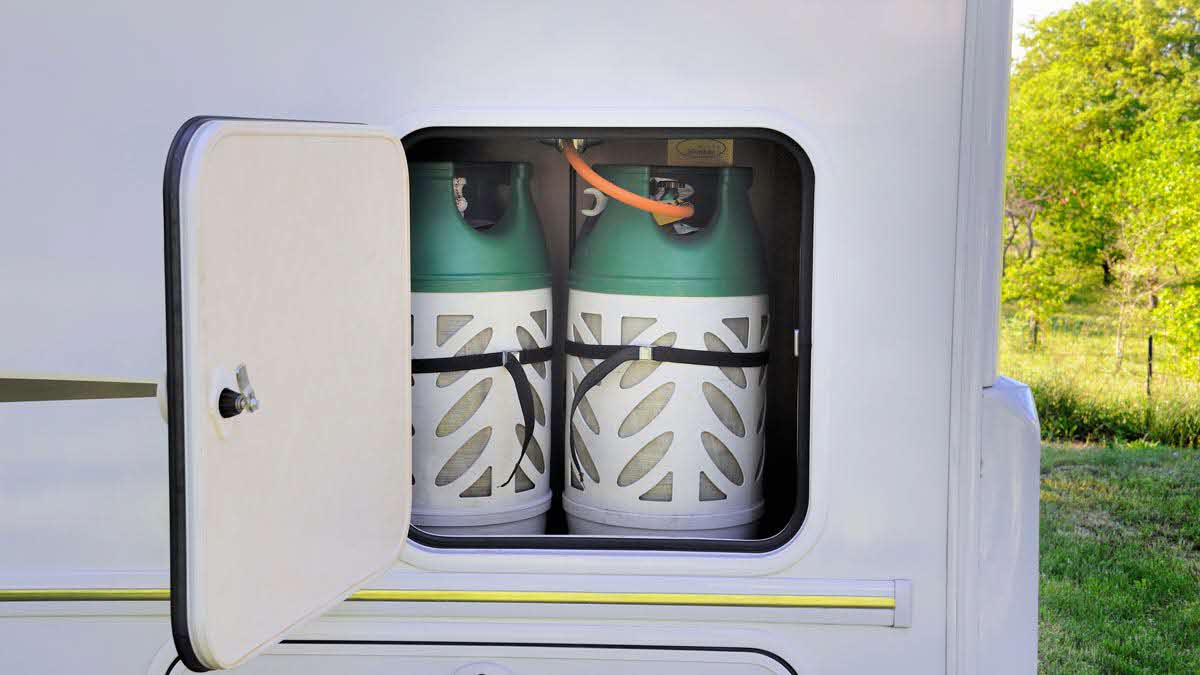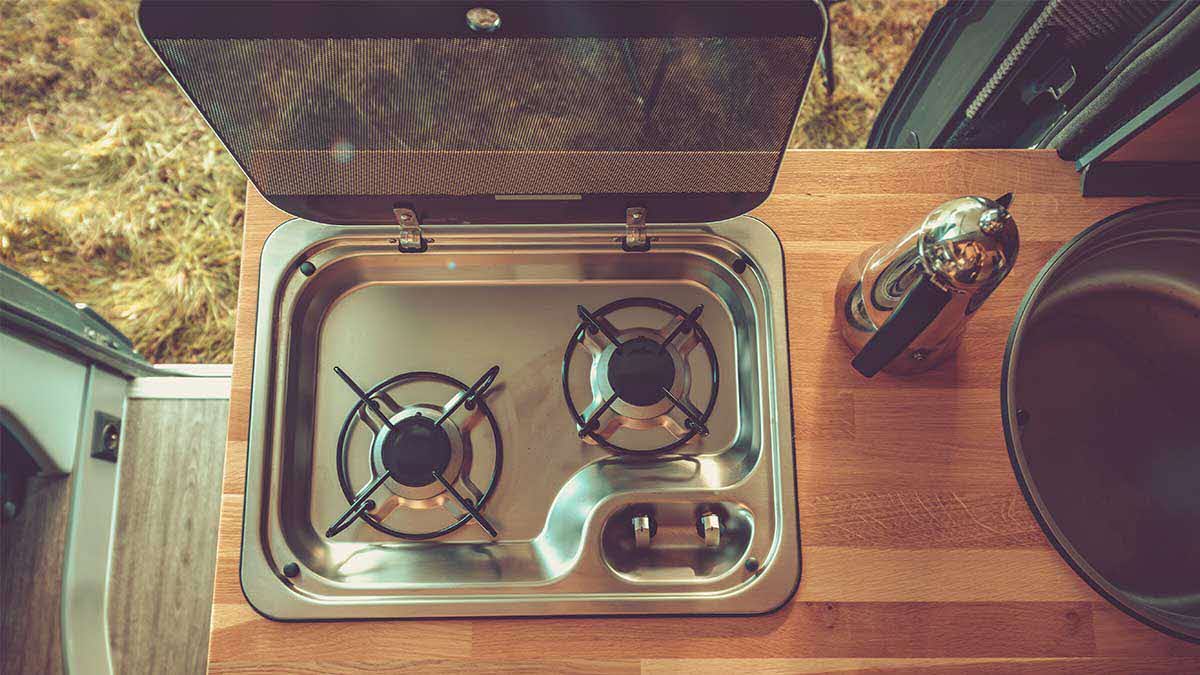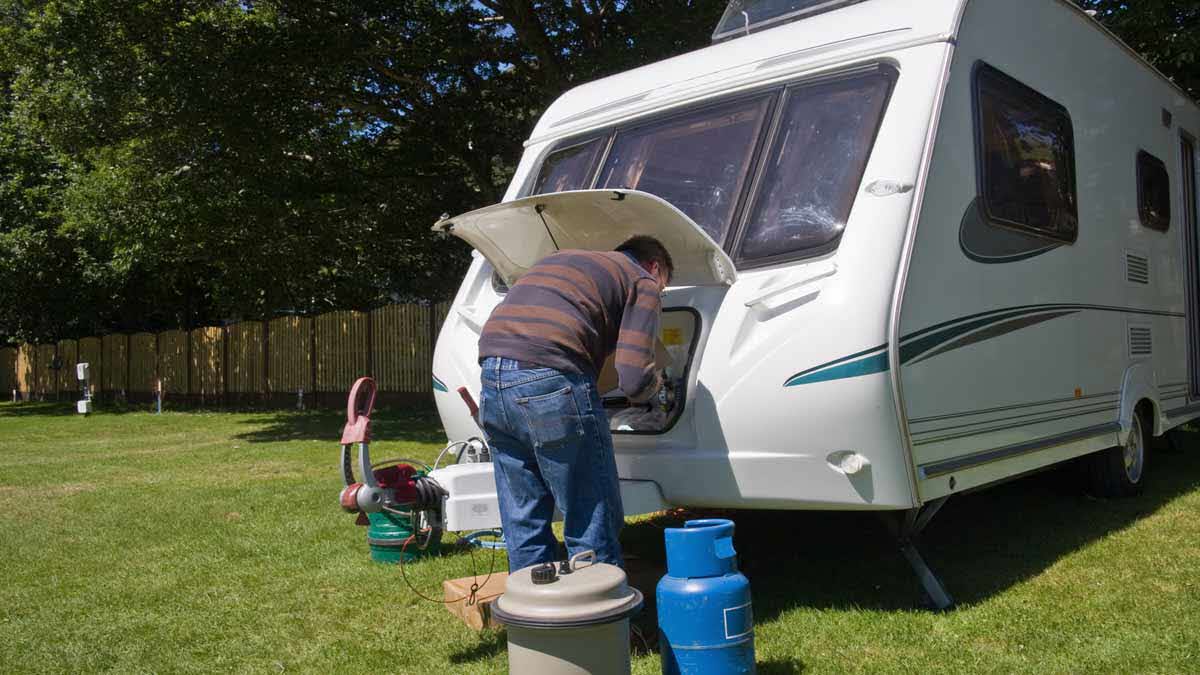It’s a gas, gas, gas…
The Club's Technical Manager, Martin Spencer shares great advice on gas safety along with a look at how technology is advancing.
There’s plenty of advice around on the basics of using gas in leisure vehicles - see Club advice on LPG and using gas and electric overseas, or the advice section at the back of your Sites Directory & Handbook.
Rather than recap all of that, what might you not know about liquefied petroleum gas (LPG)?

What is it?
Butane or propane, right? Well… ’Butane’ is usually overwhelmingly butane and ‘propane’ is usually overwhelmingly propane, but both often contain something of a mix of the two, in ratios which can vary from country to country, supplier to supplier or sometimes season to season. In general, though, what’s sold as butane is a little cheaper, while what’s sold as propane is a little more efficient (it burns a little hotter) and crucially, it has a lower boiling point so it readily turns from liquid to gas even in cold winter temperatures when butane may not.
Butane and propane are both fossil fuels. They're either extracted from natural gas (which is mainly methane, by the way) or produced during crude oil refining. That’s an issue going forward, as both natural gas and crude oil production are likely to reduce as countries eventually move toward net zero emissions.
So are the days of LPG numbered? Probably not. There’s already a small amount of sustainably-produced biopropane in the system. It’s made as part of the process of producing biodiesel, using mainly waste materials as a source. Some LPG customers can already choose a ‘green’ tariff which allows them to ‘use’ this gas. In practice, like domestic green electricity tariffs, you actually still use the same energy as everyone else, but your energy supplier contracts to put an equivalent amount of sustainable product into the system as you use, in a process known as ‘mass balancing’.
Over time, we can expect the blend of sustainable gas in the system to increase, in the same way that the proportion of sustainable petrol and diesel mixed with conventional fuels has done. The potential for biopropane production is limited by biodiesel manufacture, however. To ensure an independent gas supply, the industry has also developed a standalone renewable gas production process, which makes a slightly different but broadly equivalent gas called rDME (renewable dimethyl ester if you really want to know), which is also made from waste or renewable feedstocks. The first UK rDME facility is being built at the moment. What we don’t yet know is how quickly renewable gases will replace a significant proportion of fossil ones (although the industry has an ambitious target of 2040 for complete transition), nor what impact this will have on LPG prices. Sustainable gas production is currently appreciably more expensive, but the retail price is determined significantly by government tax policy too.

Why is gas (still) important?
So even if LPG has a sustainable future as one or more renewable liquid gases, why would we still want to use it? The answer really is to do with heating. Habitation area heating and water heating use a lot of energy, especially if you want things to heat up quickly. Gas is really well-suited to that. Mains electricity also works well, but what if you’re staying off-grid, or you need to use the available electricity to recharge vehicles instead? There will always be a practical limit on how much mains electricity is available on a campsite, especially in rural areas, so it's desirable to have an alternative.
While there’s been a lot of development of leisure vehicle 12V systems, to the point when the most sophisticated can now do almost everything you need including cooking, water heating remains a challenge and effective space heating impractical. A good 12V water heater might heat 10l of water in about an hour, but will pull 16A to do so. That’s going to take quite a lot out of even a large-capacity battery. Even a 1kW space heater would need five times as much power, however. Most leisure vehicles have a space heater of between 2kW and 4kW, which is only practical using mains electrical, gas or perhaps diesel fuel. For versatile use, when mains power is restricted or not available, gas is still a great solution.
Isn't hydrogen the answer?
Maybe... but there are lots of applications looking to use what will inevitably be a limited supply for the foreseeable future. There’s no infrastructure to store or distribute it at scale. Plus it definitely isn’t a ‘drop-in’ replacement for LPG. Instead, it would need different appliances, pipework, storage containers etc. It can’t be ruled out in the long term for new leisure vehicles, but it doesn’t look like a viable solution for a long while yet.

Keep your system safe
Correctly installed, maintained and used, gas systems are very safe indeed, but the potential for danger should never be ignored:
- To work on gas systems, you must be competent. That really rules out DIY activities unless you are unusually well-skilled, as in this context, ‘competent’ will usually mean qualified to the relevant framework - either Standards of Training in Gas Work for privately-owned vehicles or Accredited Certification Scheme for Gas Operatives, plus Gas Safe registration for work on vehicles that are hired out.
- If you’re buying a new vehicle, particularly from a small builder/converter, check that they can prove their competency in this area.
- If you hire your vehicle out, you must have a gas safety certification for it (Landlord’s certificate from a suitably qualified Gas Safe-registered engineer).
- Similarly, when getting your leisure vehicle serviced, the service technician must be competent - the easiest way to ensure this is to use a workshop which belongs to an accreditation scheme, such as the Approved Workshop Scheme: www.approvedworkshops.co.uk
- Note that while a good annual service will include functional and safety checks on the gas installation, it won’t cover detailed servicing of the appliances themselves. The main one to check separately is a gas-powered fridge, which will need periodic servicing to maintain its warranty and prevent reliability concerns and potentially safety issues.
- The only parts of the installation that an owner will usually need to deal with themselves are:
- swapping empty gas cylinders for full ones
- connection hoses (if the regulator is fitted to the vehicle) or regulators (if the regulator is attached to the cylinder) when changing gas type or cylinder brand
In both cases, always follow the equipment manufacturer’s guidance and seek advice if at all unsure what to do.
- You might smell a little gas when changing cylinders, due to gas released from the connection, but if you smell gas otherwise, switch off the supply at the cylinder. Ventilate the area to disperse any gas released and don’t use naked flames or switch electrical equipment on or off until the air has cleared. Seek professional help.
- In the unlikely situation that it’s the cylinder itself that’s leaking (usually from a faulty valve), do all of the above, but remove the cylinder to a well-ventilated open space and contact the supplier for advice.
Published July 2024

